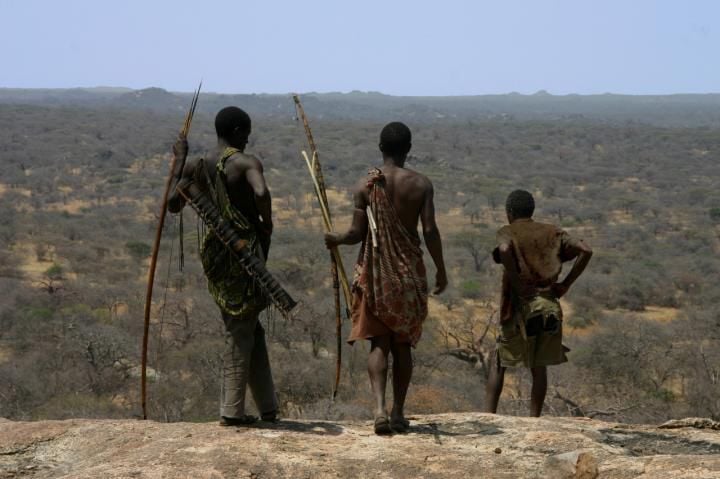University of Arizona anthropologist David Raichlen has adapted his physical routine to reflect the lessons he has learned.
He runs 4 to 6 miles most days of the week, having concluded through years of research that our sedentary ways run counter to millions of years of human evolution.
His most recently published study on the physical activity of a tribe of hunter/gatherers provides data to back him up.
The Hadza of Tanzania spend about 2 hours and 15 minutes each day in moderate-to-intense physical activity. Their risk of heart disease is negligible; their lipid levels are quite good.
The Hadza are one of the last exclusively hunter-gatherer populations on Earth.
They move their hunting camps around the forests, grasslands and swamps of the Serengeti region of Tanzania, home to a vast array of prey — about 70 types of large mammals and 500 species of birds.
People are also reading…
Almost every day, hunters venture out in solo forays, armed with bow and arrow, a small ax and a pot for gathering honey from hives, said Brian Wood, an anthropologist at Yale University who has studied the Hadza since 2004.
They go at a fast walk, said Wood, one of 10 co-authors of a paper published this week in the American Journal of Human Biology that links their regular intense activity to heart health.
They also hunt at night from blinds built near game paths and watering holes, said Wood.
They can walk up to 12 miles in a single hunting trip, said Raichlen, who has spent about three months in different years camped out with the Hadza.
For this study, 46 volunteers — male hunters and female foragers from two different camps of Hadza — were outfitted with continuous heart rate monitors that recorded the daily extent of their “moderate-to-vigorous physical activity.”
They were also tested regularly for blood pressure and biomarkers of cardiovascular health, including cholesterol levels.
Their levels of moderate-to-vigorous physical activity were 14 times that of similar epidemiological study subjects in the United States.
The study found no gender difference in the physical activity levels. The women don’t walk as far or as fast as the men but they engage in other strenuous activities — digging up the tubers that are a staple of their diet and processing foods and performing domestic chores back at camp, Wood said.
The study found “no evidence of risk factors for cardiovascular disease in this population.”
The link between vigorous exercise and health is not new, said Raichlen, but this study was a rare opportunity to record and document it in a modern population that lives much like humans and their predecessor primates did for most of their 2 million years of evolution.
Raichlen said the Hadza have lifespans similar to our own, once they get past the childhood infectious-disease stage. If they make it past adolescence, they are likely to live into their 70s, said Raichlen.
Raichlen said diet would obviously have a role in the heart health of the Hadza, but that was not a subject of this paper, which is just part of a long-term study of the tribe.
“This is a lifestyle that is really ancient for humans,” said Raichlen. The Hadza provide a window into what this sort of key lifestyle looks like.”
“We likely evolved in the context of these high levels of physical activity and require them to retain physical capacity.”
And so David Raichlen runs.
“If you’re in this line of research, it’s really hard not to practice what you preach. You see the data continually showing the benefits of activity and the really detrimental effects of being inactive.”












